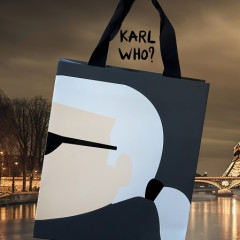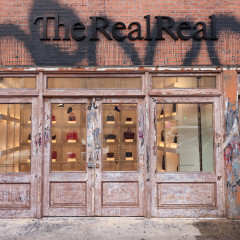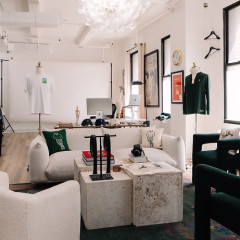 [Image via subwayblogger.com]
[Image via subwayblogger.com]
Walking down Saint Marks Place, one is inundated with ethnic food joints, crusty bars, fetish and "humor" tee shops ("Take me drunk, I'm home", F*** you very much"), and pale people in not-your-standard black and leather. These last are more site-specific, and we wondered why, and from whence their costumes came. We mustered up the courage to ask this to two girls in black, lacy dresses, Doc martens, and purple and blood-red-hued hair who were sitting outside Mamoun's.
"It's just a form of protest, I guess," Anna (purple hair) told us. "You know, fashion is so cookie-cutter and geared towards the all-American ideal. Dressing differently can show disgust or discontent with that ideal." Well put, we thought, and thanked her. Then we got ourselves to our computer and had a google-fest.
According Paul Hodkinson, an expert on Goth fashion, the look's origins are in the styles of the late 70's post-punk rockers, rockers who, like Anna, used clothing (and music) to express cultural and societal discontent.The London nightclub the Batcave booked artists like Specimen and Alien Sex Fiend, whose music and look combined glam rock with a heavy dose of horror flicks. Goth-rock bands, Bauhaus in particular, and their proliferating followers, culled imagery from classic and current alienated soles: Bram Stoker and Anne Rice's vampires, Mary Shelley's Frankenstien, Burgess' droogs, as well as the 1968 horror film, The Hunger. The look juxtaposes soft and flowing with tough and shiny. And the crucifixes? They show that God doesn't turn his back on the shadows.
We're not sure how many of the kiddies lining up behind us at Pinkberry really believe this, but from now on, we're going to try to give them the benefit of the doubt, rather than chuckling over the woes of nascent Hot Topic exposure.


.jpg)
.jpg)



.jpg)
.jpg)
.jpg)




